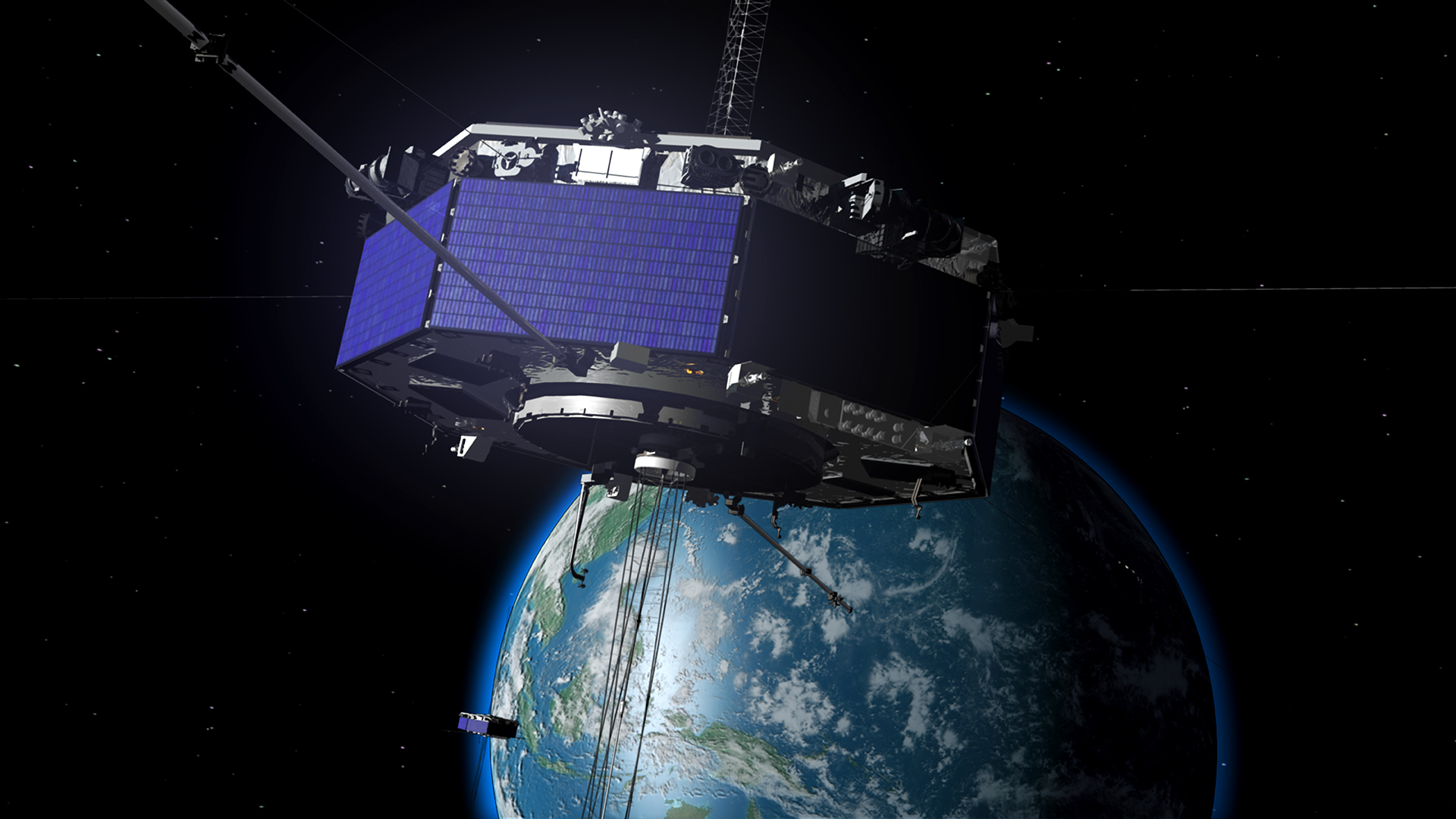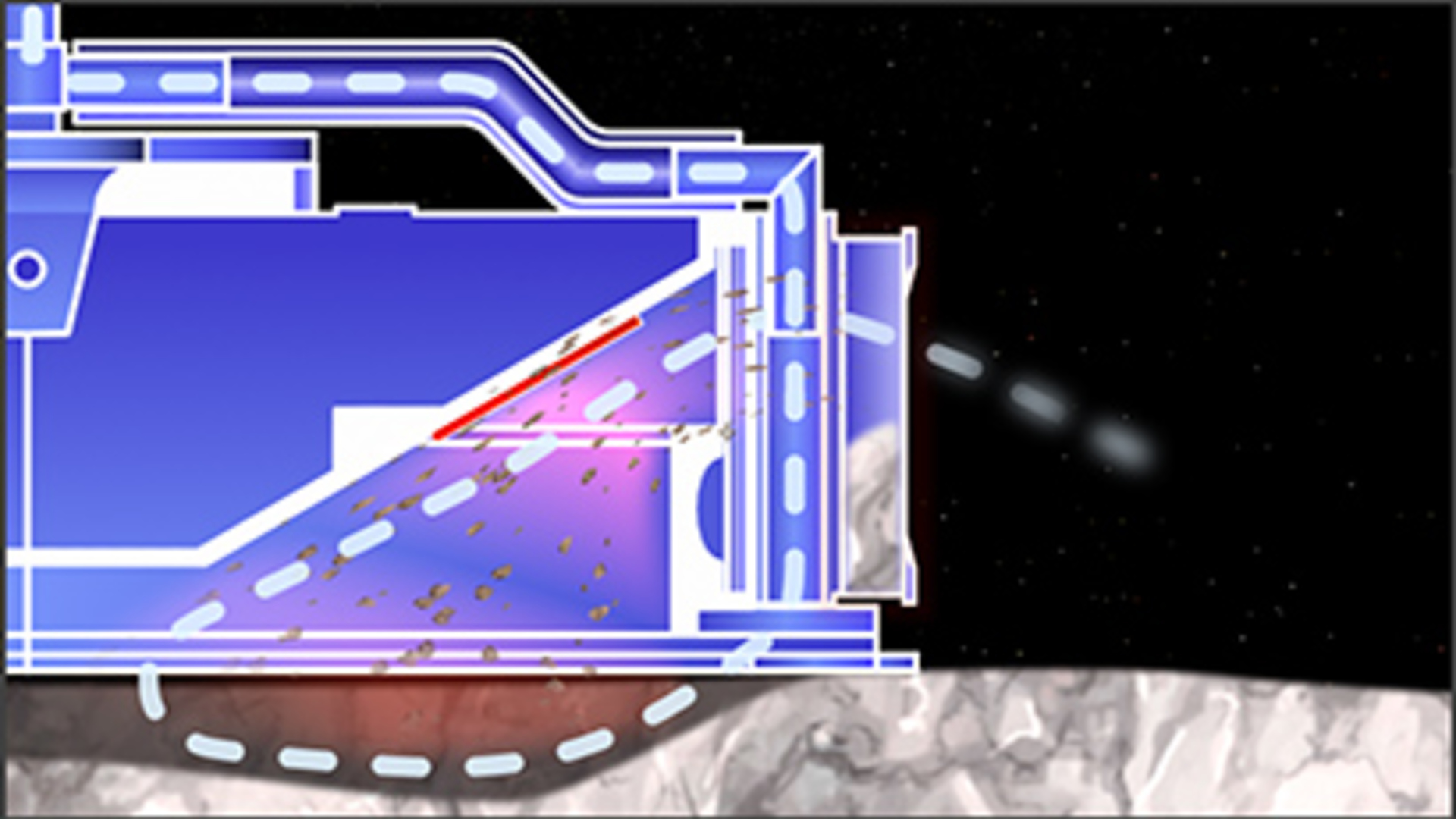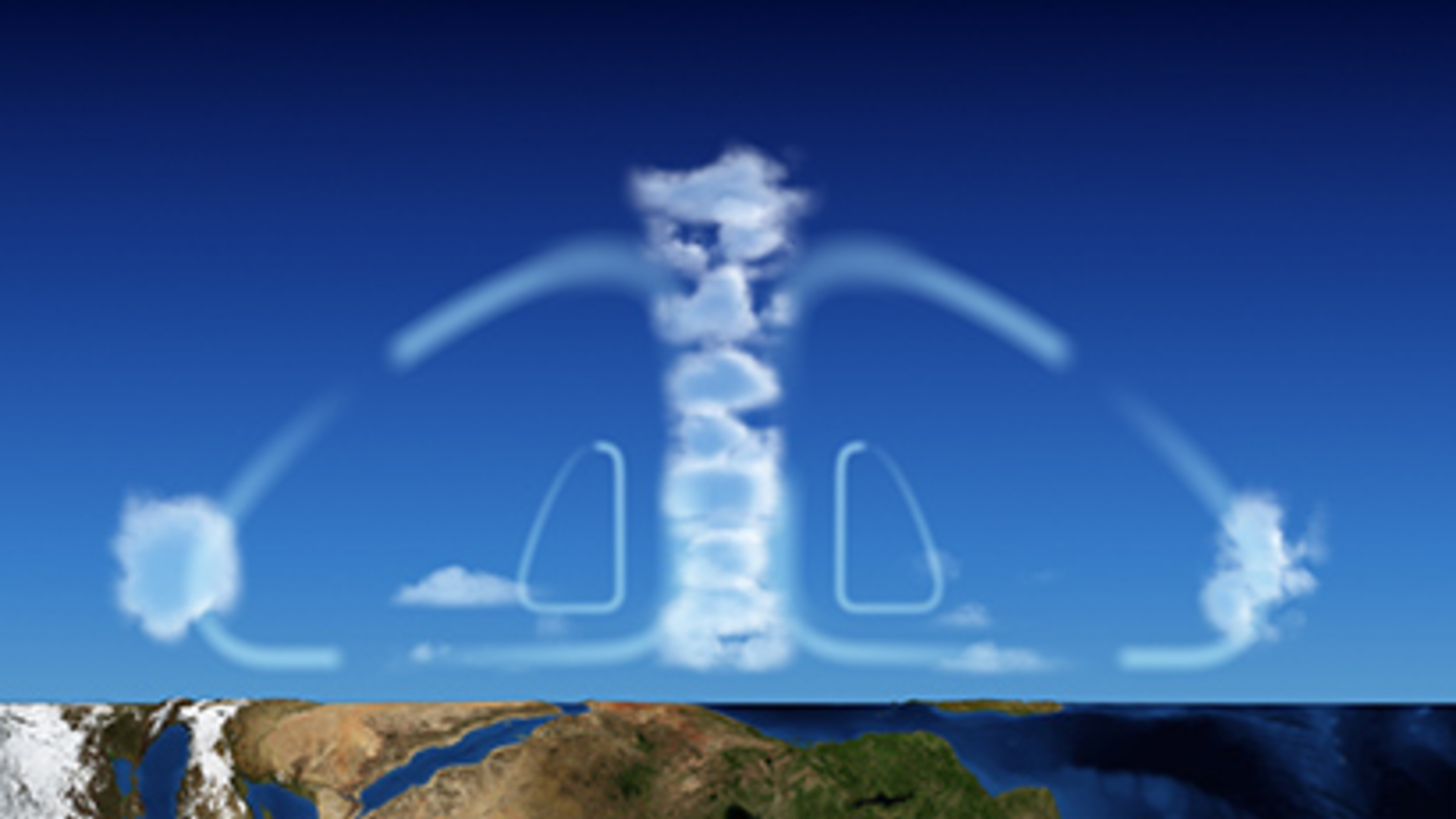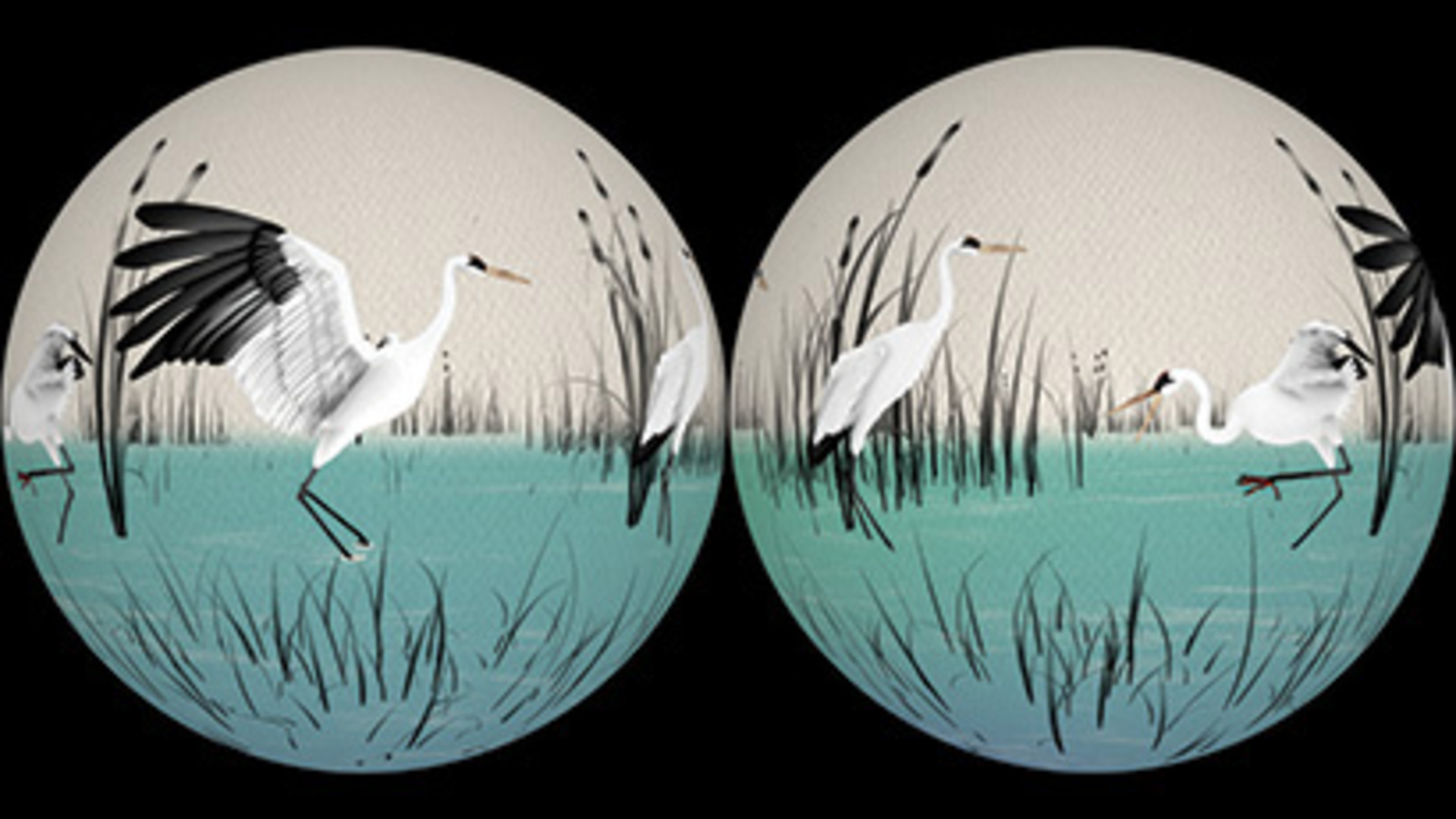
Between 2007 and 2014, the IRC collaborated with NASA/Goddard Space Flight Center, creating earth science animations and visualizing future satellite missions that will study the Earth and solar system. This partnership funded IRC media specialists who supervise the production process and work alongside gifted undergraduate animation students to create media products that communicate the critical research being done by NASA scientists and researchers.
The program funded more than $750,000 worth of animation and visualization in the IRC including two to three full-time positions. These positions provide important post-baccalaureate experience and were filled by recent UMBC graduates from the Visual Arts Department and the IRC Fellows program. Working with these full-time artists were talented undergraduate students, enrolled in the IRC internship program, who gained valuable production experience and developed contacts at NASA-TV and the Goddard Space Flight Center.
TAGSAM (Touch-and-Go Sample Acquisition Mechanism):

Tyler Chase worked with producer Dan Gallagher to create a pair of animations explaining the operation of the TAGSAM, the main instrument on the spacecraft OSIRIS-Rex. The planetary science mission launched in 2016 with the goal of not only touching down on an asteroid but also returning a sample of the surface. The two animations illustrate how the gas-operated retrieval mechanism collects the regolith material. One animation is a realistic rendering of the instrument while the other uses a more stylized blueprint look.
Collaborator: Dan Gallagher, producer, NASA/GSFC
IRC Personnel: Tyler Chase, modeler and animator, IRC
Fluorescence:

Created by Tyler Chase and producer Kayvon Sharghi, this sequence of animations shows the release of fluorescent light from green plants, a byproduct of photosynthesis. Illumination data was collected by the METOPS satellite, processed by NASA visualizer Gregory Shirah, and translated by Dr. Joanna Joiner. The animation features a representation of sunlight entering a chloroplast, and the subsequent release of fluorescent illumination, continuing out from the leaf to a planet-wide view.
Collaborators: Kayvon Sharghi, producer and editor, USRA, Dr. Joanna Joiner, researcher, NASA/GSFC, Greg Shirah, data visualization, NASA/GSFC
IRC Personnel: Tyler Chase, modeler and animator, IRC
Hadley Cells:

The goal of this project was to display the results of climate research conducted by NASA JPL scientist Sui Hu regarding atmospheric circulation and the changes brought about by increasing temperatures. As temperatures rise, the speed of circulating air and cloud heights increase. These relationships were illustrated primarily in After Effects, with the clouds being made from fluid simulations in Maya.
Collaborators: Kayvon Sharghi, producer and editor, USRA, Dr. Hui Su, researcher, NASA/JPL, Carol Rasmussen, writer, NASA/GSFC
IRC Personnel: Tyler Chase, modeler and animator, IRC
MMS (Magnetospheric Multiscale Mission):

Launched in 2015, the MMS mission uses a formation of four identical spacecraft to investigate how the Sun’s and Earth’s magnetic fields interact, transferring energy in the process known as magnetic reconnection. To show the interaction between the spacecraft and their highly eccentric orbit, a high-resolution model provided by NASA animator Walter Feimer was reduced to a more manageable model suitable for rendering multiple visible copies. The majority of the work for this project was cleaning up conversion errors that occur between modeling programs.
Collaborator: Walter Feimer, producer, NASA/GSFC
IRC Personnel: Tyler Chase, Animator
Water Falls:

IRC technical director Ryan Zuber created over four minutes of 3D animation for Water Falls, a “Science on a Sphere” film that describes the NASA Global Precipitation Measurement (GPM) mission, its scientific objectives, and how it fits into larger research enterprises involving the international scientific community’s ongoing efforts to understand our climate on a global scale better. The film premiered in January 2014 at NASA’s Goddard Space Flight Center, The Wild Center in Tupper Lake, New York, and The Space Foundation in Colorado Springs, Colorado. These animated sequences are constructed to work specifically in the spherical projection platform, exploiting the singular properties that make the spherical film an exceptional format to display scientific data sets and communicate their relevance in a fun, novel, and accessible way.
Collaborators: Michael Starobin, director, and Victoria Weeks, editor, NASA/GSFC
IRC Personnel: Ryan Zuber, technical director/modeler/animator
Researchers and Creators
Project Director: Dan Bailey
Collaborators: NASA/Goddard Space Flight Center, University Space Research Association, Wade Sisler, NASA-TV
Modelers/Animators: Tyler Chase, Ryan Zuber
Imaging Research Center, UMBC © 2024